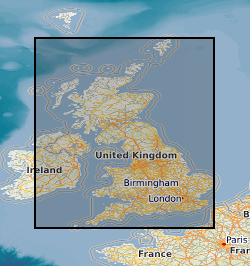Corrosion
Type of resources
Topics
Keywords
Contact for the resource
Provided by
Years
Formats
Representation types
Update frequencies
Scale
-

This national digital GIS product produced by the British Geological Survey indicates the potential for leakage to have a negative effect on ground stability. It is largely derived from the digital geological map and expert knowledge. The GIS dataset contains seven fields. The first field is a summary map that gives an overview of where leakage may affect ground stability. The other six fields indicate the properties of the ground with respect to the extent to which hazards associated with soluble rocks, landslides, compressible ground, collapsible ground, swelling clays and running sands will be increased due to leakage. The data is useful to asset managers in water companies, local authorities and utility companies who would like to understand where. and to what extent, leaking underground pipes or other structures may initate or worsen ground stability.
-

The dataset is a Soil Corrosivity Map for the U.K. based on the BGS DIGMapGB-PLUS Map. The creation of this dataset involves scoring the Soil Parent Material types for five different attributes that contribute towards the corrosion of underground assets. These are (i) high or low soil pH, (ii) general soil moisture, (iii) the likelihood that soil saturated and undergo periods of anaerobic conditions, (iv) the presence of sulphides and sulphates and (v) the resistivity of the soil parent material. The scoring of each of these parameters was undertaken based on the Cast Iron Pipe Association (CIPA) (now the Ductile Iron Pipe Research Association, DIPRA) rating system. By combining the scores of each parameter a GIS layer has been created that identifies those areas that may provide a corrosive environment to underground cast iron assets. The final map has been classified into three categories signifying: 'GROUND CONDITIONS BENEATH TOPSOIL ARE UNLIKELY TO CAUSE CORROSION OF IRON', 'GROUND CONDITIONS BENEATH TOPSOIL MAY CAUSE CORROSION TO IRON', 'GROUND CONDITIONS BENEATH TOPSOIL ARE LIKELY TO CAUSE CORROSION TO IRON'. The dataset is designed to aid engineers and planners in the management of and maintenance of underground ferrous assets.
 BGS Data Catalogue
BGS Data Catalogue